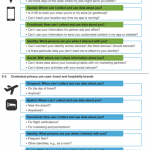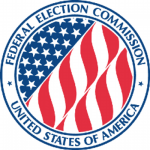Do Pet Sitters Really Need A License? How Occupational Licenses Are Hurting The Economy
In New York City, you need a license to pet-sit someone’s dog (at least if you want to be paid). In Louisiana, you need a license to become a florist. Nine states require funeral attendants to be licensed before starting work.
The number of jobs–from cosmetology to interior design–requiring government-issued licenses is on the increase. About 29% now require one, up from less than 5% in the 1950s, according to economists Morris Kleiner and Alan Krueger. In that time, the share of licensed workers in the U.S. workplace has jumped fivefold. And the requirements on many occupations–including training and education, tests, fees and even character assessments–are also on the rise, say critics of the regulations.
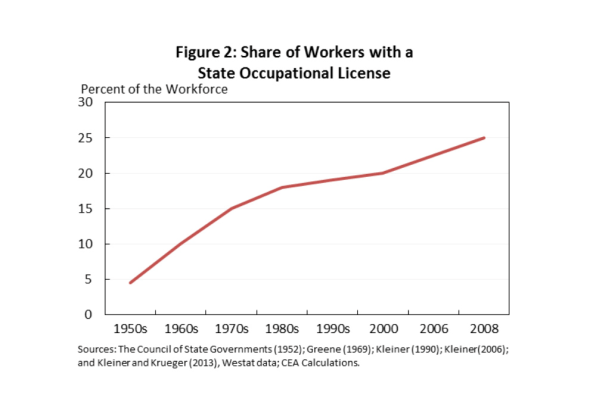
License regimes emerge when states, cities, counties, or the federal government regulate an activity, often in the interest of public safety. New York’s pet-sitting law, which requires licensees to buy insurance and use designated kennels, is meant to “ensure [the] health and safety of pets and reduce risks to public health,” the city’s Health Department says (though it very rarely enforces the regulation).
It’s tempting to see positive news in this licensing trend–that workers are becoming professionalized (that is, competent and trustworthy) and that consumers are being protected from fly-by-night operators. But, rather than protecting the public or raising standards, critics see workers being frozen out of potential jobs, and incumbents (whether companies or individuals) protecting profits and wages.
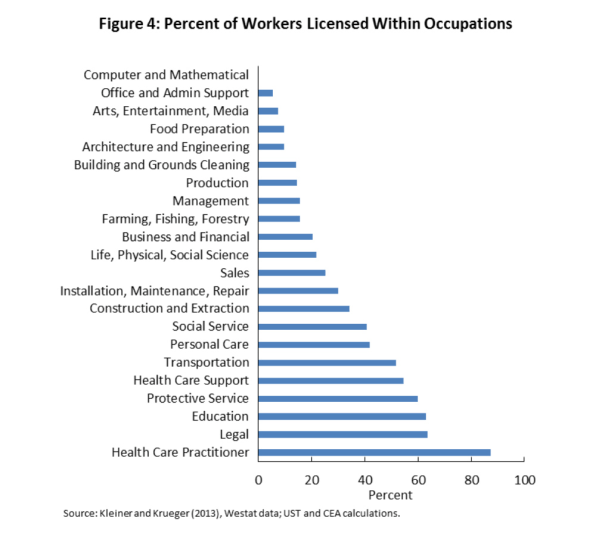
“Licensing creates a fence that people trying to get into that occupation have to climb over, while, at the same time, protecting people within the fence who are already practicing the occupation, who would have to compete against them,”says Jason Wiens, policy director at the Kauffman Foundation, an entrepreneurship-focused think tank. “It’s an anti-competitive practice that has negative barriers to entrepreneurship.”
Onerous occupational licensing has traditionally been a bugbear of the libertarian right, which wants government out of the way of the market. But recently the issue has been taken up by more liberal economists as well, including Kreuger, a professor at Princeton. In an extensive report on the topic, the Obama White House, where Kreuger was chief economist, argued that licensing requirements raised the cost of goods and services, restricted employment, and made it more difficult for workers to cross state lines.
“Some economists say more licensing has contributed to less mobile labor markets, because people don’t move between jobs as much, as well as to declining economic dynamism in the United States, particularly in the rate of new business creation,” Wiens says.
The effect is felt strongly by low-income workers, according to a study by Stephen Slivinski, a senior research fellow at Arizona State University. He finds that states with the most licensing requirements on low-income jobs tend to have the fewest opportunities for low-income workers. Louisiana, Oregon, and Mississippi have the most of these requirements, he says; Vermont, South Dakota, and Ohio have the fewest. In a 2012 report, the Institute of Justice looked at the requirements on 102 low- or moderate-licensed jobs. On average, they required nine months of training, at least one exam, and the payment of $209 in fees.
Licensed companies enjoy a 15% “licensing premium” compared to unlicensed ones, Kleiner and Kreuger show. But, licensing arrangements themselves can seem quite random, not a function of real safety or service concerns. “Two states may have vastly different requirements for getting a license, which raises the question about the the arbitrary nature of these regulations,” Wiens says.
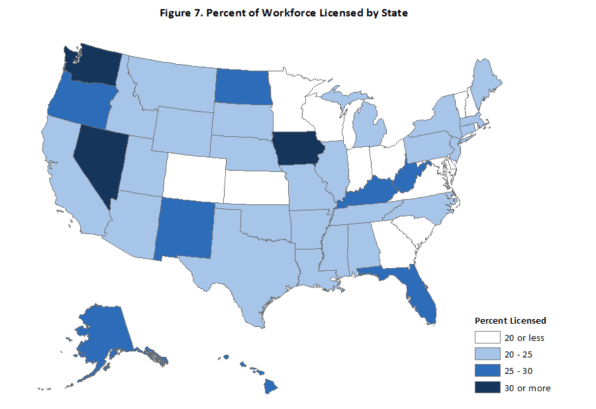
For example, California requires fire alarm installers to complete 900 days of training, pay a fee, and pass an exam. Nevada, next door, requires no education or training for the same workers. Michigan sees that security guards get three years of education and training; most other states require little more than 10 days.
Training requirements often seem out of proportion to risk, either to the customer or the worker. More than 60 occupations have greater average licensing burdens than emergency medical technicians. The average EMT only completes 33 days training. But the average cosmetologist, who cuts hair, tends skin, and smoothes nails, spends 372 days in training, the Institute of Justice‘s study says.
Cosmetology, truck and bus drivers, and pest control specialists are the most commonly licensed professions. About 1,100 occupations are regulated in at least one state, but only 60 are regulated in all 50 states, the White House report said. California licenses the most occupations.
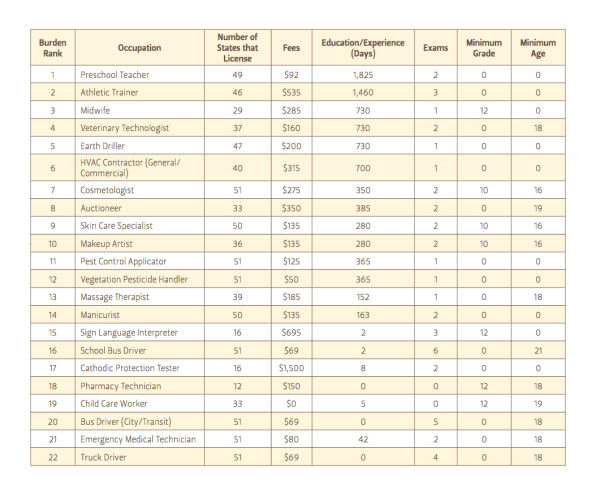
Labor secretary Alexander Acosta recently gave broad (and vague) support for occupational licensing reform at the federal level. In the past, Congress has discussed reciprocity of licensing, where workers can take licenses across state lines more easily. But Wiens says the most important actions are likely to be taken by the states, if at all.
He wants state policymakers to weigh more carefully where licenses are needed, for instance by looking at the public benefit (or otherwise) that other states have experienced. He wants more emphasis on licensing alternatives, like registrations and certifications. And he suggests we pay more attention to licensing boards, often composed of people from the occupations and professions they’re overseeing. “There’s a conflict of interest there. States could populate those boards with more people who are not practicing members of that profession,” he says.
States can also set up “sunrise” and “sunset” commissions to look at whether licensing rules meet key tests like improving health and raising service standards. Florida, for example, allows both, looking at rules before they’re signed into law, and then also at regular intervals. Occupational licenses may make sense at the time they’re enacted, says Wiens, but, given their economic importance, they need to maintain their relevance.
Fast Company , Read Full Story
(70)








